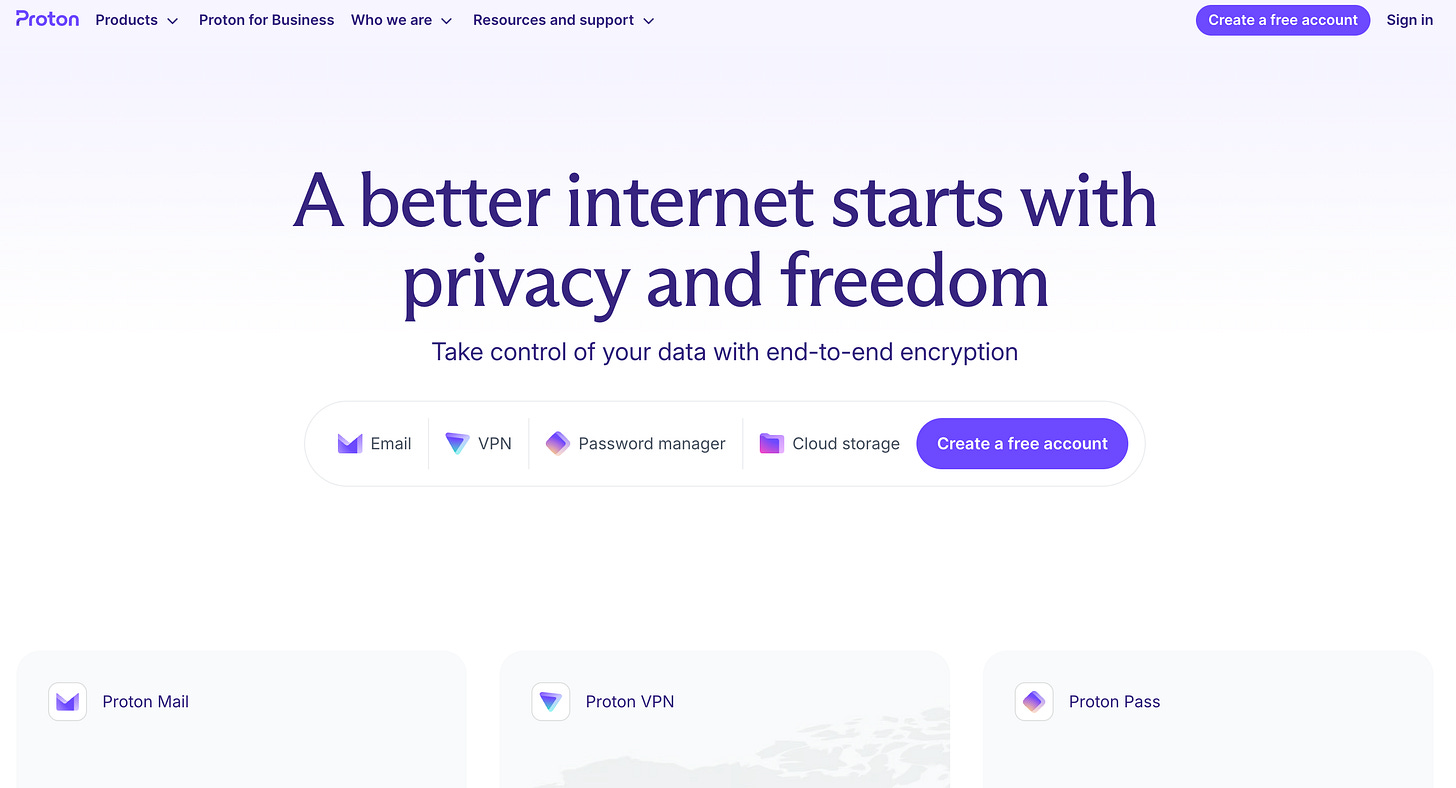The Creative Calendar That Changed Everything
How I optimized my week using chronobiology, meditation, PARA, and family boundaries
Create Smarter. Lead Better. Grow Boldly.
If you're building brands and creative work that matter, you're in the right place.
Subscribe for systems, strategies, and real talk on getting it done.
We spend so much time thinking about what to work on — but not nearly enough time designing when to work on it.
I’ve built campaigns in multiple time zones, led creative teams across platforms, and raised two kids while writing a book. But the thing that’s made the biggest difference in my ability to stay consistent?
A calendar system that respects how I actually function.
This isn’t about squeezing in more — it’s about protecting the right energy for the right tasks. It’s also about knowing when to slow down, Because you cannot run full steam all the time. Otherwise you become counter-productive, and you end up not producing your best work.
This why my creative and operational stack start with the most unexpected app: a calendar. But here’s a twist: it is based on science and customized on my chronotype.
🧠 1. Know Your Energy Curve (Chronotype Science)
The secret to peak productivity isn’t time management — it’s energy alignment.
I discovered this discussing with ChatGPT, when I first asked:
"I notice there are specific times of the day I am the most optimal in terms of productivity. Ask me a few questions to better tailor your answer, and explain to me the science behind it".
Ensued an interesting ping pong convo about chronotype. Little-by-little, I redesigned my weekly calendar based on my own chronotype, and redefined when to do what.
This idea is grounded in chronobiology, the study of how our internal clocks govern physical, mental, and behavioral changes over a 24-hour cycle (think Circadian rhythm). One of the most accessible frameworks for this is the chronotype model, popularized by sleep doctor Michael Breus in his book The Power of When.
Everyone has a chronotype — a biological pattern that determines when you naturally feel alert, focused, or sleepy. It influences your ideal sleep times, productivity peaks, and energy dips.
According to Breus and supporting studies, people tend to fall into these four categories:
🦁 Lions: Early risers who feel most productive in the morning.
🐻 Bears: The most common type; follow the sun's rhythm, productive mid-morning to early afternoon.
🦉 Wolves: Night-oriented creatives who hit their stride late in the day.
🐬 Dolphins (less common): Light sleepers who tend to feel scattered or anxious during the day but productive in short bursts.
After taking a test, I discovered I’m a classic Lion: my best deep work happens from 6:30–10:30 a.m. That’s why I’ve carved out early blocks for writing and strategy — and defend them like a dojo.
I set this on my Personal calendar as a recurring template along with a widget on my phone so it does not clutter my work calendar. Though you also set this up on your Google cal as an added calendar and just toggle it on and off. Also I keep it flexible for work imperatives, it serves me as a reminder and I try to enforce it when I can.
⛹️♂️ 2. Blocks Over Chaos: The Power of Structured Focus + Recovery
Sometimes productivity isn’t about doing more. It’s about doing less, with intention.
In a world addicted to multi-tasking and hustle culture, the real flex is learning to protect your focus — and recover intentionally. This is why including recovery blocks and block scheduling are equally important. Because creative energy is a resource, not a switch. The result? Less mental load. More creative flow. And fewer dropped balls.
🔁 Why Block Scheduling Works (Backed by Science)
It reduces context switching
Every time you switch between tasks, your brain wastes time and energy refocusing.
A study by the American Psychological Association found that task-switching can reduce productivity by up to 40%.
It improves flow state
Long, uninterrupted blocks are the best way to access deep work.
Cal Newport’s research shows deep work requires at least 60–90 minutes of undistracted focus to reach max productivity.
It creates psychological safety
When you know that shallow work, meetings, and creative bursts each have their place, you stress less about “when will I get to that?”
Time-blocking has been shown to reduce decision fatigue and increase perceived control over the workday — a major factor in lowering burnout risk.
It makes room for recovery
Even elite athletes train with built-in recovery days. Why should creative pros be any different?
Research from the University of Illinois shows that even brief mental breaks can dramatically improve performance on prolonged tasks (they call this the “vigilance decrement” effect).
💡 How I Apply It
My calendar has:
Deep Work blocks in the morning (protected, phone on focus mode);
Admin & Collab time in late morning;
Recovery time after lunch (buffer, meditation);
Creative async time in the afternoon;
A dedicated short planning session every Thursday to reflect and reset. I am giving a tool below to help this.
🧘♂️ 3. Meditation Isn’t Extra — It’s Operational
Meditation isn’t just wellness fluff — it’s a strategic performance enhancer.
Latest studies show:
Reduces stress & anxiety (JAMA Internal Medicine, 2014)
Increases focus and working memory (Psychological Science, 2013)
Helps regulate emotional reactivity — key for creative leadership
I recently started implementing it as a systematic routine (rather than oh! I have 5 min now. Let’s do it). That’s why meditation gets its own calendar. It’s flexible, but prioritized.
Meditation isn’t a new tech bro breakthrough — it’s a 2,500-year-old system of mental training. And it’s quietly behind the scenes of some of the sharpest minds in modern creative leadership.
Samurais meditates before hitting the battlefield;
CEOs meditate;
Elite athletes meditate;
Military special forces use breath training to stay calm under extreme pressure.
This isn’t about becoming a monk. It’s about being able to notice your thoughts — so you can lead with intention, not reactivity.
At monday.com, we are lucky to have a meditation room in the office, that I wish I was using more.
🧠 What meditation actually trains
Most people think of meditation as a way to relax. That’s a side effect.
What it’s really doing is:
Strengthening your attention muscle
Increasing meta-awareness (noticing when you're off-task or reactive)
Improving emotional regulation (so you can handle hard feedback or creative stress)
Reducing your default noise level — that mental chatter that kills momentum
These aren’t soft benefits. They’re high-performance adaptations. I used to do it everyday twice a week, and was a game changer. Life happened. Now, I try 4 times per week in 15-minute blocks: morning, midday reset, or evening wind-down.
🔬 The science is stacked
Here are some key findings from major studies:
🧘 8 weeks of mindfulness training changes brain structure — increasing gray matter density in the hippocampus (memory) and reducing volume in the amygdala (stress response).
🔁 Meditation improves working memory and focus duration, even in novices
🧘 15 minutes a day of consistent meditation reduces anxiety and boosts self-regulation
👨👧 Kids, Not Clutter: Carving Space for Family
Protecting creative energy means protecting the relationships that anchor it.
Most of the week, 4:30–8:30 p.m. is Kids Time — fully blocked out, for pick ups, playtime, bath, dinner, story… (well there are exceptions of course for urgent calls).
I treat that time like a meeting with my most important collaborators.
Because if I don’t plan for it, something else will take it.
🛠️ 5. PARA: A Lightweight System That Scales
PARA (along with using a Second Brain, coined by Tiago Forte) is an organizational method I’ve also implemented recently. The bottom line is the brain is meant to have ideas, not to hold on them. By taking them out, you leave mental space to do more.
It’s flexible, fast, and future-proof.
📂 What is PARA?
PARA is a method half-way between note taking and task manager. Here how it works. You set up in your note-taking app a series of folders divided as below:
Projects — time-bound things you're working on (e.g. “Launch Q2 campaign”)
Areas — ongoing responsibilities (e.g. “Creative Ops”, “Health”, “Kids”)
Resources — notes, references, ideas
Archives — completed or inactive stuff you don’t want to lose
The great thing about keeping it organised this way (and digital instead of on paper) is that it is highly searchable. You can also use a tagging system for quick access and research.
Top Note-Taking Apps for PARA & Second Brain Users
🖥 Native & Built-In
Apple Notes — Zero-friction, native on all Apple devices
OneNote — Notebook-style layout with deep Office 365 integration
🔗 Networked Thought Tools
Obsidian — Markdown-based with powerful bidirectional linking (local files)
Roam Research — Bidirectional links and daily journaling by design
Logseq — Privacy-first, bullet-based system with local graph features
🧘 Minimalist / Aesthetic
Craft — Elegant UI with beautiful export & publishing features
Google Keep — Simple capture and reminders in sticky-note form
🛡 Privacy-First & Open Source
Standard Notes — Fully encrypted with minimalist, distraction-free design
Joplin — Open-source and encrypted, supports markdown + sync
🧭 Legacy & Reliable
Evernote — Legacy tool with powerful search, tagging, and web clipper
📅 Why I use it in Apple Notes
I have personally tried Apple Notes, Obsidian, Notion, Standard Notes, Joplin, OneNote. Eventually I settled for the simpler choice.
Fast capture: it’s free, and available on all iOS devices. Already sync’d in the cloud. If you are already invested in the Apple eco-system, (and I have been since I am 12), then it follows you through device updgrades.
Native to all my devices (Laptop, smartphone, tablet).
Simple folder structure
Can paste pictures, links etc….
Tagging system for ease of search
I keep a Weekly PARA Dashboard note I update every Thursday during my planning block. Notion template here or you can copy-paste the following template in Notion/Apple Notes
# 🧭 PARA Dashboard — Weekly Hub
*Updated: [Insert Date]*
## 🔧 Projects (Active)
- [ ] Substack Series — Proof of Reality
- [ ] Finalize CTV Creative Ops system
- [ ] Review Q1 Brand Runner metrics
## 🧩 Areas (Ongoing)
- Brand Strategy
- Creative Ops & Systems
- Family Logistics 👨👧
- Health & Sleep
- Finance
## 🧠 Resources (Captured Insights)
- Book Highlights (Musashi, Creativity Inc.)
- Campaign Benchmarks
- PARA + Productivity Experiments
- Meditation Prompts
## 📦 Archived This Week
- 2024 Planning Deck
- Campaign: AI x Brand
- Slack Notification System v1
## 🎯 Top Priorities Next Week
- [ ] ______________________
- [ ] ______________________
- [ ] ______________________
I also added an extra folder called Book Highlights. I take the highlights from my kindle and organized then there as a resource to consult when I need, and also ease of use to review casually
It’s not fancy, but it works, it’s cloud-based and it’s free.
I am also a big fan of Proton Privacy (Privacy version of the Google suite). They recently acquired Standard Notes (end-to-end encrypted). Will probably switch to SN once it’s implemented in the paid plans, as the free plan does not allow for folders and tags. You can signup here for a free plan.
Next step for you
Go to ChatGPT (or you favorite AI assistant). Here is the prompt I entered
I notice there are specific times of the day I am the most optimal in terms of productivity. Ask me a few questions to better tailor your answer, and explain me the science behind it. Help me implement a more efficient way to schedule my day.As you prompt it, you can also give very specific aspect of your schedule that you want to be implemented as a routine. Like I did gym 3 times a week. Ask questions, get insights, test different routine and implement to become the best version of yourself.
One last word. There are many productivity methodology, mindset model and so on out-there. It is impossible to implement all of them. You have to find the right combinaison for you that brings you value. It needs to serve you while requiring the most minimal effort from you, so you can you use that creative head of yours to be… creative.
Test different routine and implement to become the best version of yourself.
I’m brewing up new Brand Runner tools, templates, and hot takes to help you do better creative work with less stress. But before I hit publish… I want to hear from you.
If you’ve ever stared at a blank doc, juggled 12 platforms, or felt like your creative brain was buried under admin dust — this one’s for you 👇
👉 Take this quick 2-minute survey
Your answers will shape what comes next.
Thanks for being part of this. I’ll share back what I learn soon — and maybe build something just for the most common pain points. Let’s get you flowing again ⚙️
Other articles you might be interested in
Unlock Timeless Strategy for Modern Brands
What can a 17th-century swordsman teach you about content strategy, brand building, and growth?
Turns out — a lot.
The Five Rings of Marketing is a bold, battle-tested guide to mastering modern marketing with ancient wisdom.
⚡Connect⚡
Thanks for reading!
Connect with me on LinkedIn
Please drop a comment below, let me know your take 👇, and subscribe here.
Listen🎙️ to the Brand Runner podcast on:










